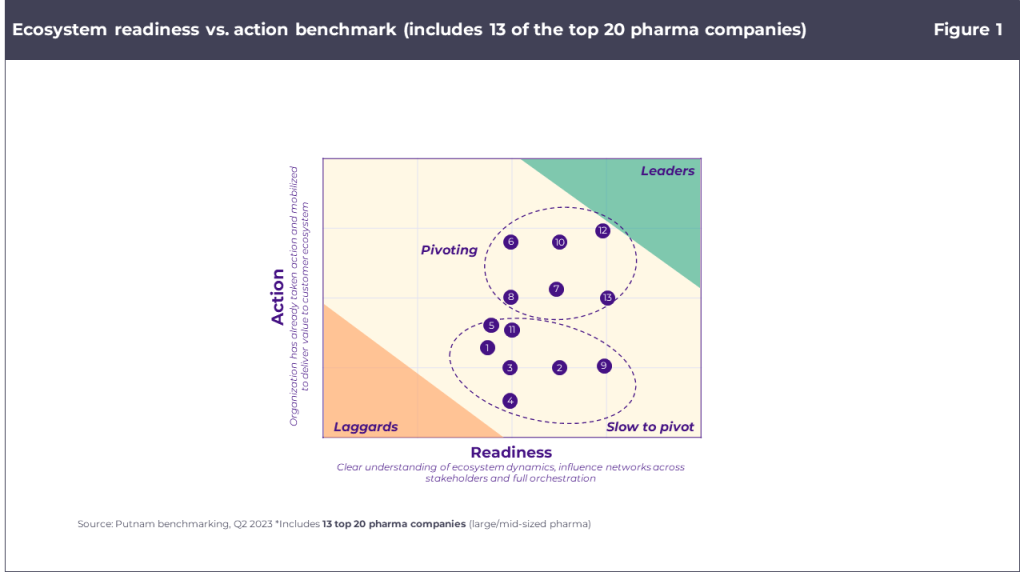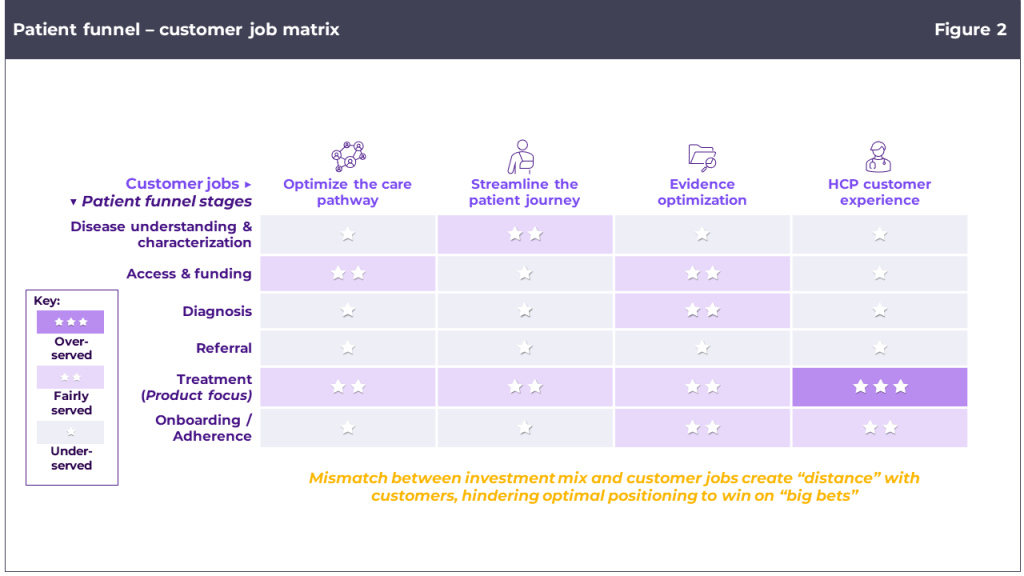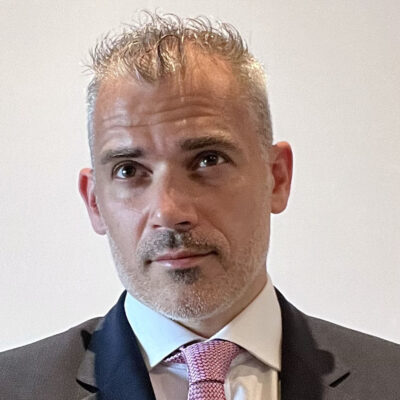The new healthcare ecosystem realities impacting customer engagement
A rapidly shifting healthcare landscape and a wave of cost-containment initiatives destined to put further pressure on the pricing of pharmaceuticals across all major geographies (e.g., Inflation Reduction Act in the US and the recent pricing and reimbursement reform in Germany) is placing greater emphasis on optimized customer engagement models.
In parallel, healthcare systems have turned their focus onto increasing the resilience and effectiveness of their care delivery models by evaluating different integrated organizational configurations (e.g., integrated care systems in the UK and integrated delivery networks in the US), providing greater interconnectivity across settings of care, and adopting digital technologies along the patient journey. Pan-European initiatives such as EU4 Health and Horizon Europe have further fueled the overhauling of the healthcare infrastructure. Within this context, pharma customers continue to grapple with the increasing inflow of complex medical technologies and the exponential proliferation of new clinical data while having to operate within severely resource-constrained care practices.
As healthcare becomes progressively more organized and integrated, the pharmaceutical customer engagement model needs to re-position itself to best serve these new customer ecosystems and capture the value of R&D innovation. In our recent analysis of over nearly 200 launches between 2018 and 2021, we identified “high ecosystem IQ” as one of the key performance drivers for successful product launches. High ecosystem IQ combines two components: 1) the ability of an organization to deeply understand how value is distributed across an ecosystem of stakeholders, their influence networks, and what the right trigger points are to drive the adoption of novel pharmaceutical innovation; 2) the ability to engage ecosystem stakeholders in designing and seamlessly executing key initiatives that deliver value on key customer jobs.
Measuring high ecosystem IQ among top pharma companies
In order to better understand where the industry stands on this topic, we benchmarked 13 of the top 20 pharma companies along the two key dimensions that measure high ecosystem IQ, readiness, and action (see Figure 1).

The data displays how most companies generally exhibit a solid degree of awareness and understanding of ecosystem dynamics, however only a sub-set of companies have started to pivot their customer engagement model to deliver value to these newly formed stakeholder ecosystems. There are four key areas of intervention that must be prioritized to effectively engage organized customers:
- Build high ecosystem IQ: In the future customer engagement model, strategic planning and execution are perfectly aligned and adapted to local ecosystem dynamics while the organization maximizes the use of data and technology to rapidly capture any evolution of local ecosystems and their customers in near-real time. Building a high ecosystem IQ will require a highly empowered frontline with the mandate to connect the dots across the ecosystem and drive innovation and superior customer experience along the care pathway.
- Re-index the investment mix towards high-value customer jobs: At present, the industry is still over-indexing the investment mix on a narrow range of customer jobs – generally focused on individual healthcare professional engagement and experience – and primarily focused on the lower part of the patient funnel (see Figure 2). Tackling the key challenges posed by new ecosystem realities and engaging with organized customers will require a different investment model that shifts away from the traditional incremental and functional logic (as opposed to zero-based, outside-in approaches). The ideal investment mix must optimally allocate resources among the key customer jobs that are needed to capture the full value of the asset along the patient funnel

- Drive hyperlocalization: Driving true hyperlocalization will touch every aspect of the organization, from the way contents are produced by the back-office team to the way the frontline is organized and operates in field, leading to heterogeneous and flexible frontline configurations across the territory (for the same asset or portfolio) with the aim to respond to different ecosystem dynamics at local level.
- Operate with speed and precision: A high-performance customer engagement model must aspire to operate at best-in-class speed augmented with precise, up-to-date data. In highly competitive therapy areas, speed and precision are two key differentiators considering the limited opportunities to create a competitive advantage. The back-office organization will need to operate more closely with the frontline to handle rapid feedback loops as new field insights become available and provide the customer-facing team rapid access to a range of solution platforms (e.g., integrated care pathway expertise, program management for complex local multi-stakeholder initiatives, localized real world evidence and HEOR analytics).
Evolving the customer engagement model to a micro-enterprise model
In a future where customers will be increasingly more organized, connected, and ultimately powerful, the customer engagement model will need to evolve into a micro-enterprise, borrowing some of the principles and language originally codified by Haier, the world’s largest appliance maker, which have become a leading example on how to build a highly customer-centric enterprise. In 2012, Haier reinvented itself by going through a radical organizational transformation in which employees self-organized into >4000 micro-enterprises that respond directly to user needs. This change was guided by two key principles of the Rendanheyi* model:
- Zero distance to the customer: placing the customer at the heart of the organization and re-wiring ways of working, governance, and incentives to be more agile and responsive to the customer’s requests and needs.
- Everyone is an entrepreneur: creating an environment that empowers teams by giving them greater decision-making power and resulting in faster innovation co-created with end users and partners.
From an organizational standpoint, the micro-enterprise model should build on two core platform layers:
- The user experience platform, which comprises all the relevant frontline capabilities and operates with a high degree of empowerment and autonomy and with leading targets that are not defined incrementally, but via an outside-in approach that aims to pursue ambitious goals for growth and transformation at a local level. Frontline design is not based on traditional job labels but instead starts with an in-depth assessment of the key customer jobs and the competencies required to deliver the best customer value. There are four core frontline personas that are key in the pharma micro-enterprise model:
- Ecosystem architect: a system thinker focused on market development.
- Customer experience champion: ensuring best-in-class customer experience at an individual level across all channels and touch-points, and operating with an ethnographer-like mindset.
- Disease navigator: helping clinical stakeholders to connect the “evidence” dots and building disease awareness and advocacy.
- Patient access enabler: pursuing the vision of a frictionless patient journey by exploring solutions to remove all hurdles (e.g., funding, infrastructure, education).
Frontline personas are only subsequently codified into roles based on financial, competitive, and operational considerations as well as talent availability (internally and externally). Different frontline configurations should be pursued at a local level if needed to fully match customer jobs and where commercial opportunities are located along the patient funnel.
- For the frontline to truly operate at zero distance to the customer, empowerment by itself is not sufficient and needs to be supported by a second platform – the solution platform – which acts as a “back-office-as-a-service”. This layer represents an evolution of the back-office organization and is structured around customer solutions (which can also be contracted externally) that are key to delivering the best possible value to local customer ecosystems.
Ensuring long-term success and accelerated performance
The road towards “zero distance to the customer” starts by developing a high ecosystem IQ organization and building a thorough understanding of the jobs customers are demanding. Those are non-optional elements in designing high-performance customer engagement models to wow organized customers.
The Putnam team has defined different archetypes for the micro-enterprise model that can be adapted to different investment and competitive contexts as well as company culture. Get in touch to discuss how the micro-enterprise principles can be applied to accelerate the performance of your portfolio and organization.
Footnotes:
* “Ren” refers to each employee, “Dan” refers to the needs of each individual user and “HeYi” refers to the connection that exists between each employee and the needs of the user







